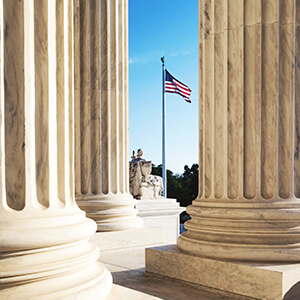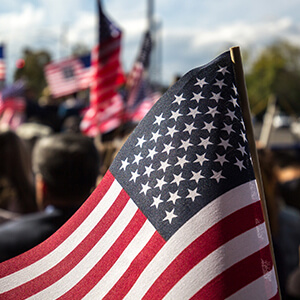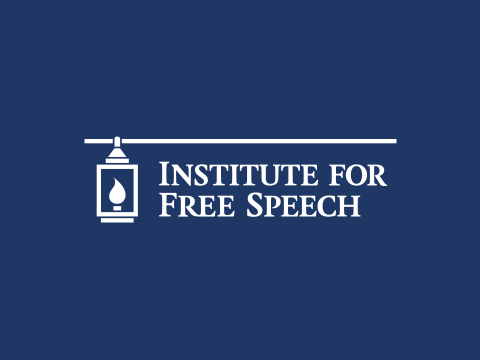The Washington Post’s Ruth Marcus is after so-called "527" organizations today, noting activity by a 527 called Democracy Still Works. Staffed by Massachusetts Democratic strategists and created on September 28, it immediately set out printing glossy flyers attacking Republican congressional candidate Jim Ongonowski, who was in the midst of a surprisingly vigorous challenge to capture a seat for the GOP in the special election to replace Massachusetts Congressman Marty Meehan (D-Mass.).
This story provides a good opportunity to review what McCain-Feingold did and did not do vis a vis independent 527 organizations, a needed review in light of a longstanding disinformation campaign by regulatory advocates such as Fred ("Democracy 21") Wertheimer and the Campaign Legal Center.
One set of the glossy mailers distributed by Democracy Still Works (DSW) said "No one should be signing blank checks to President Bush!," and urged recipients to "Call Jim Ogonowski and tell him you don’t agree with his spending priorities!" Another showed a young girl blowing on a dandelion, and read, "President Bush feels she doesn’t deserve healthcare. Under the Niki Tsongas Plan, kids get the healthcare they need!" Neither specifically urged a vote for Tsongas or against Ogonowski.
Now, those familiar with campaign finance law know that the Supreme Court, in Buckley v. Valeo, limited the reach of campaign finance law to the "explicit advocacy" of election or defeat of candidates, a phrase narrowly interpreted for many years by the courts. Thus, ads that spoke in critical terms of a candidate’s record, but refrained from use phrases such as "support," "defeat," "re-elect," "vote for," "vote against," or other terms of "express advocacy" were exempt from regulation, and could be paid for with "soft" (i.e. unregulated) money. For years the regulatory community longed to overturn this regime. Through the 1980s and 1990s, the vehicle for doing so was enforcement actions against speakers, arguing for a broad definition of what constituted "express advocacy." This definition the FEC attempted to codify in its regulations at 11 CFR 100.22(b). Campaign Attorney Bob Bauer describes the regulation thusly
"The standard as written wanders in this direction and the other, noting that context can be considered but only to a ‘limited’ extent; and that it is really a question of how ‘reasonable minds’ would take in a statement that is ‘unmistakable, unambiguous and suggestive of only one meaning’—when ‘taken as a whole.’ And this is a legal test? It’s quite the mouthful, and the parts lack internal consistency: how is it that a statement can be ‘unmistakable and unambiguous’ but also, at the same time, simply ‘suggestive.’ And yet a statement subject to this standard must be all three: ‘unmistakable, unambiguous and suggestive.’"
These efforts were singularly unsuccessful, with the FEC losing case after case in the courts. After no fewer than four U.S. Courts of Appeal had found the definition unconstitutional, the denoument came in a case called FEC v. Christian Action Network, wherein the 4th Circuit Court of Appeals took the unusual step of requiring the FEC to pay the defendant’s legal fees, finding the FEC’s argument to be frivolous.
With this failure, regulatory groups changed tack and began looking for new ways to get at issue advocacy of this type. Political parties were easy. The groups argued that national party speech can be considered to be inherently about electing candidates, and therefore national parties could be restricted from receiving or spending any soft money. True, national parties might have an interest in spending money in state and local races according to state and local law, but at least the approach seemed plausible. A more difficult problem was how to deal with non-party groups, such as the Sierra Club, the NAACP, or Democracy Still Works.
The solution was to determine first, that most issue ads are run close to elections; and second, to determine that most issue ads run close to elections are really "campaign" ads. The first part was easy, using data from broadcasters. The second part was done by having college students watch broadcast ads and then code them as "issue" ads or "campaign" ads. These studies were duly funded by the Pew Charitable Trusts, under a guarantee that work would cease if the results did not seem to support an argument for more regulation. At the end of the day, the "reformers" argued that most ads run within 60 days of a general election, or 30 days of a primary election, were "campaign ads," regardless of their use of "express advocacy." This became the basis for the "electioneering communications" provision of McCain-Feingold, which prohibited corporate or union funding of broadcast ads mentioning a federal candidate within the 30 and 60 day time frames, including funding by incorporated membership groups such as the NRA. The test clearly met the bright line requirement needed, under Buckley, to avoid unconstitutional vagueness, and in McConnell v. FEC, the Supreme Court also upheld the test against a challenge of overbreadth. Neither McCain-Feingold nor McConnell v. FEC attempted to change the well-established definition of what constituted "express advocacy." Rather, the McConnell court merely noted that the "functional equivalent" of express advocacy – "electioneering communications" (ads mentioning a candidate within the 30/60 day time frame) could also be regulated.
In the aftermath of the McConnell decision upholding the ban on soft money contributions to parties, independent 527s such as Swift Boat Veterans for Truth, MoveOn.org, and others took a higher profile in the 2004 and 2006 elections. For reformers, this threatened their handiwork. Why, as much money was being spent as ever! Since it is undeniable that McCain-Feingold did not attempt to change the definition of "express advocacy" or what constituted a "political committee" subject to FEC regulation, reformers were in a bind – how could they admit that the effort had all been for naught? The response conjured up, and repeated endlessly by the Campaign Legal Center, Wertheimer, and Senator John McCain, is that the FEC was failing to "enforce pre-existing law" by refusing to find that all these 527s were already political committees subject to all the restrictions of the Federal Election Campaign Act.
Now, back to Democracy Still Works. Either the DSW ads contained express advocacy, or they did not. Let’s assume for now that they did not (something Marcus may not agree with). Why was DSW limiting itself to non-broadcast ads? The answer is simple – under McCain-Feingold’s 30/60 day limits on pre-election campaigns, it could not have used corporate or union funds, or have been incorporated itself, for broadcast ads. But if, as Senator McCain, "Democracy" Wertheimer, and the CLC claim, under pre-existing law ANY 527 influencing federal elections was a "political committee" (and thus prohibited from accepting any corporate or union funds) what was the point in enacting the added restrictions on running ads within 30 or 60 days of an election? This is why, in McConnell, the Supreme Court specifically noted that while "BCRA imposes numerous restrictions on the fundraising abilities of political parties… interest groups, however, remain free to raise money to fund voter registration, GOTV activities, mailings, and broadcast advertising (other than electioneering communications)."
Now let us consider whether or not DSW is engaged in express advocacy. Their ads do not use the much derided "magic words" – "vote for," "vote against," "support," "defeat," etc. So for them to have engaged in express advocacy, the FEC would have to rely on regulation 100.22(b) – the same regulation that U.S. Courts have repeatedly struck down as unconstitutionally vague. Since 100.22(b) was not addressed by McCain-Feingold and not addressed by the Supreme Court in McConnell v. FEC, these holdings remain valid. McConnell doesn’t address the regulation precisely because McCain-Feingold was based on using the end-run of the 30/60 day limitations, rather than "express advocacy," to limit union and corporate speech.
In fact, Marcus argues that the DSW mailings qualify as express advocacy, but uses the standard of 100.22(b) to make that determination. It is to her credit that she doesn’t fall for the Werthheimer/McCain/CLC line that merely by virtue of their status as 527s, this speech by these groups is prohibited. But the problem of trying to enforce Section 100.22(b) demonstrates the broad problem with the law. To Ms. Marcus, it’s pretty easy – these groups should be shut down. But why? How are officeholders corrupted by their independent activity? How is the electoral process debased when voters hear their message? Is it better to overturn Buckley, and give the government more power to determine which messages are heard? Or is the purpose of the First Amendment to keep government out of such determinations, recognizing the potential for favoritism and abuse?












